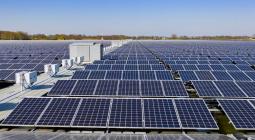Can’t afford a home battery for your solar? It might be worth joining a Virtual Power Plant
Virtual Power Plants have the capacity to reduce emissions and make home batteries cheaper. So what are they?
Reducing your home’s carbon footprint starts with improving thermal efficiency – sealing leaks and enhancing insulation. The next step, embraced by over a third of Australian households, is harnessing solar energy through rooftop panels. But the journey doesn’t stop there.
After a slow start, more solar owners are choosing to add a home battery system. These systems not only help householders by storing solar energy for night-time use, but are key to flattening the grid’s evening and morning demand peaks, mitigating the need for carbon-heavy peaking power plants.
But home batteries remain stubbornly expensive. Tesla’s new Powerwall 3 – just released in the US – costs the same as the previous model, Powerwall 2, and offers the same storage capacity of 13.5 kWh.
So as home batteries remain a substantial investment, is there a way to make them more affordable and maximise their impact on our electricity grid?
Enter the Virtual Power Plant (VPP)
For those who’ve filled their roof with solar and added a battery – or are weighing up the merits of a battery – participating in a VPP is worth considering. Envision a community-wide network of batteries, all synchronised by sophisticated software to send electricity back and forth, and bolster the grid during demand fluctuations. This not only elevates your battery’s role supporting the grid but also promises financial incentives through further reductions in your electricity bills in return for your support.
In practice the VPPs are operated by energy retailers, who don’t exactly have the best reputation for sharing their profits equitably with consumers. The result is that most VPPs can be fairly underwhelming when it comes to saving money on your bill – over and above the savings you get anyway from simply owning a solar and battery.
The pros and cons of VPPs
Pros
-
Reduced emissions: your battery can do more for the environment as part of a VPP by helping the grid integrate renewables and reducing the need for fossil fuel firming. Every kWh you send to the grid could mean roughly 0.4kg less CO2 emissions being sourced from gas. If you assume 30 extra 10kWh battery discharges over the course of a year, which is anecdotally what a VPP might use, then that’s about 120kg of extra emission reductions a year for every home battery.
-
Subsidised battery costs: some VPPs offer a discount on your battery purchase in the vicinity of $1,000.
-
Reduced electricity bills: some VPPs offer lower rates per kWh for your grid electricity, and higher rates for feeding in your surplus solar.
-
Bill credits: some VPPs dish out variable or fixed monthly credits: typically $150 to $200 off your annual bill.
-
Cons
-
Not all batteries are compatible.
-
The value of fixed grid credits are generally underwhelming.
-
Variable grid credits, where the price fluctuates, are a gamble on grid demand events.
-
Handing over control of your battery might rub you the wrong way, especially if more grid independence was a key factor in getting solar and batteries.
-
Intensive use by VPPs will shorten your battery’s lifespan.
-
The economics of joining a VPP
The economics are dependent on the generosity of the VPP provider. But a VPP that gives both a $1,000 battery discount and $200 a year in grid credits would reduce the typical payback of a home battery from 11 years to closer to eight years, and best-case payback of a home battery from 5.5 to 4.5 years.
To VPP or not to VPP?
VPPs aren’t for everyone. If you bought solar and batteries to take back control from the energy retailer, watching your battery charge and discharge to an energy retailer’s command is likely to just wind you up.
-
If your VPP drains your battery, you won’t have backup energy in outages.
But if you bought solar and batteries because you want to accelerate the grid’s move to renewables, a good VPP will reduce the upfront cost of an expensive home battery and maximise your home’s contribution to reducing the wider grid’s emissions.
The problem is that many solar and battery owners want autonomy while also helping the grid. If that’s you there is an alternative path. With the help of your installer (or the internet if you are tech savvy) you can modify your battery configuration to:
-
Charge the battery later every morning instead of as soon as the sun comes up. Grid demand falls off a cliff after about 10am – so charging later is better.
-
If you’ve used up your battery’s reserves in the evening, recharge from off-peak grid electricity after 1am (when grid demand is low) so your battery can power your home through the morning peak.
But if the complexities of configuring your battery sound daunting, a trustworthy VPP offers a done-for-you solution.
What to look for when comparing VPPs
-
A generous discount off the battery purchase cost
-
Guaranteed, regular bill credits
-
Competitive grid tariffs and feed-in tariffs
-
A limit to how often the battery is charged and discharged above normal use
-
Avoid long lock-in periods
-
Get a guaranteed minimum discharge limit so you will always have energy in a blackout
-
Beware of solar system size limits
-
Once signed up, watch out in case terms get less generous over time
Immense potential
As Australia’s world-beating rooftop solar capacity reshapes our power system, the potential for millions of future home batteries to support the increasingly dynamic grid is immense.
The choice for home battery owners is whether to join a Virtual Power Plant to amplify this impact or keep control and navigate solo.
Cover photo: VPPs elevate a home battery’s role supporting the grid while also offering further reductions in electricity bills. Photograph: Getty Images




